A switch to south-westerly winds and mild temperatures meant conditions across much of Britain and Ireland took on a more spring-like quality, with many birders scoring their first migrants of the season. Both Sand Martin and Little Ringed Plover were high on the agenda, reappearing in healthy numbers as far north as northern England.
Rarity-wise, spring migration was headlined by Britain’s earliest-ever subalpine warbler – a male Western Subalpine – on Ramsey Island, Pembrokeshire, on 17th. The earliest accepted Western hails from over three weeks later, on 7 April, while there are five records of subalpine warbler not assigned to species level from the latter half of March.
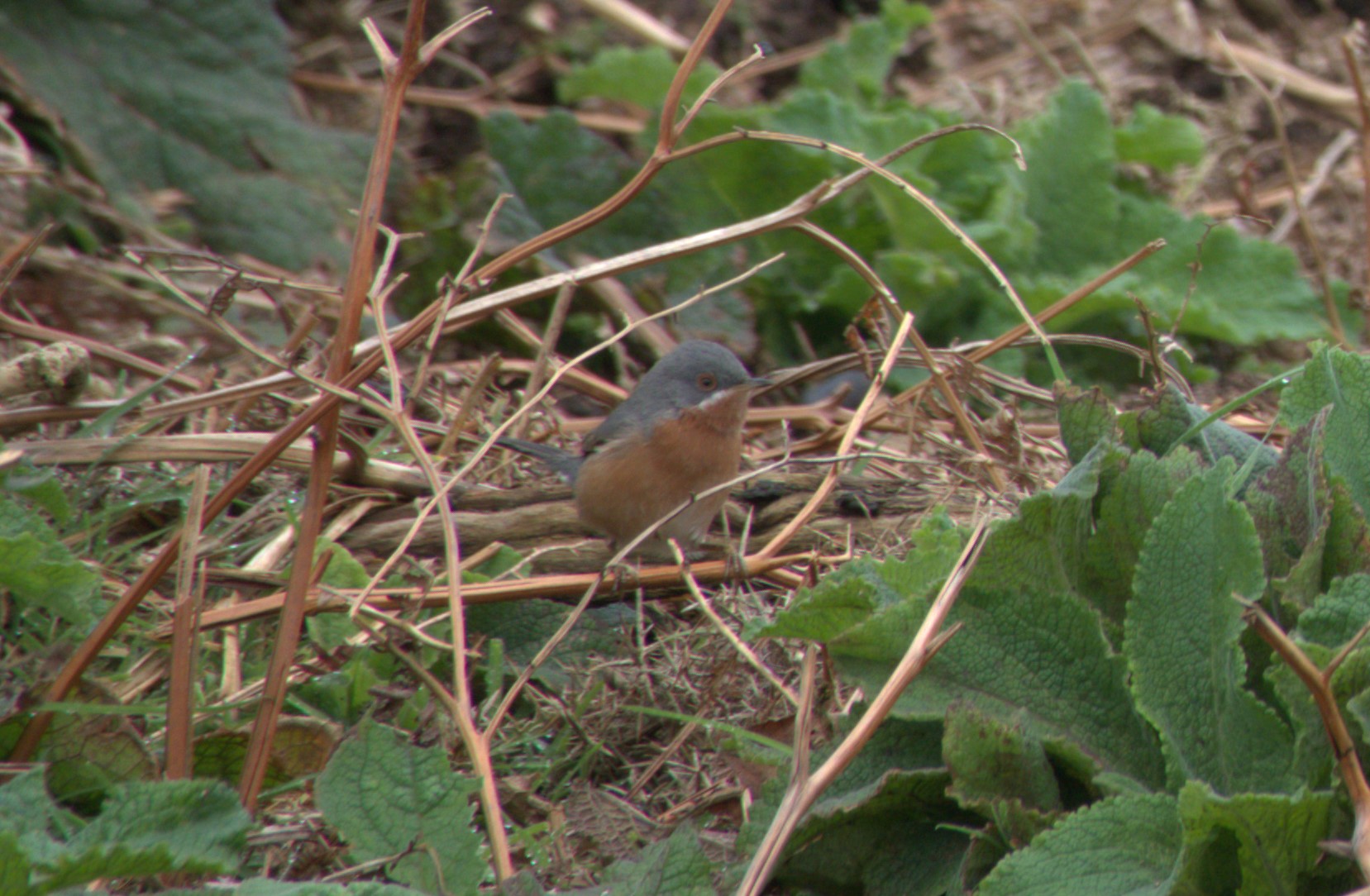
Western Subalpine Warbler, Ramsey Island, Pembrokeshire (Alys Perry).
A mid-March Rüppell’s Warbler would be even more unexpected, yet Sunday evening brought surprise murmurings of one at Middlebere, Dorset, on 15th. It would be an exceptionally early occurrence of a species that is still yet to return to its eastern Mediterranean breeding grounds in any great numbers, however, with previous records not arriving in Britain until June at the earliest. This mega-rarity has been recorded in Britain on just five previous occasions, with the most recent report concerning a male at Aberdaron, Caernarfon, on 21 June 1995. Noted identification features included a distinctive white moustachial stripe, black head and bib, white breast and grey-brown upperparts – but might a misidentified Reed Bunting instead be more likely?
More expected drift migrants for mid-March saw a couple of Alpine Swifts reach Ireland (at Skerries, Co Dublin, on 14th and Blennerville, Co Kerry, on 15th), with two Hoopoes – at Hedge End, Hampshire, and Durlston, Dorset – also arriving from mainland Europe. Brief European Serin were at South Huish, Devon, and St Catherine’s Point, Isle of Wight; even more surprising was a first-winter Red-breasted Flycatcher reported by two observers at Sutton Hoo, Suffolk, on 15th.
Further Northern Wheatear made a welcome appearance this week, including Scotland’s first of the spring at Torness, Lothian, on 15th. Five Common Whitethroats and 11 Willow Warblers comprised the first examples of the spring. Other welcome arrivals saw Osprey reported throughout the spine of Britain, with notable sightings including the return of well-known female ‘Maya’ to her Rutland Water nest site from 12th – first spied via webcam.
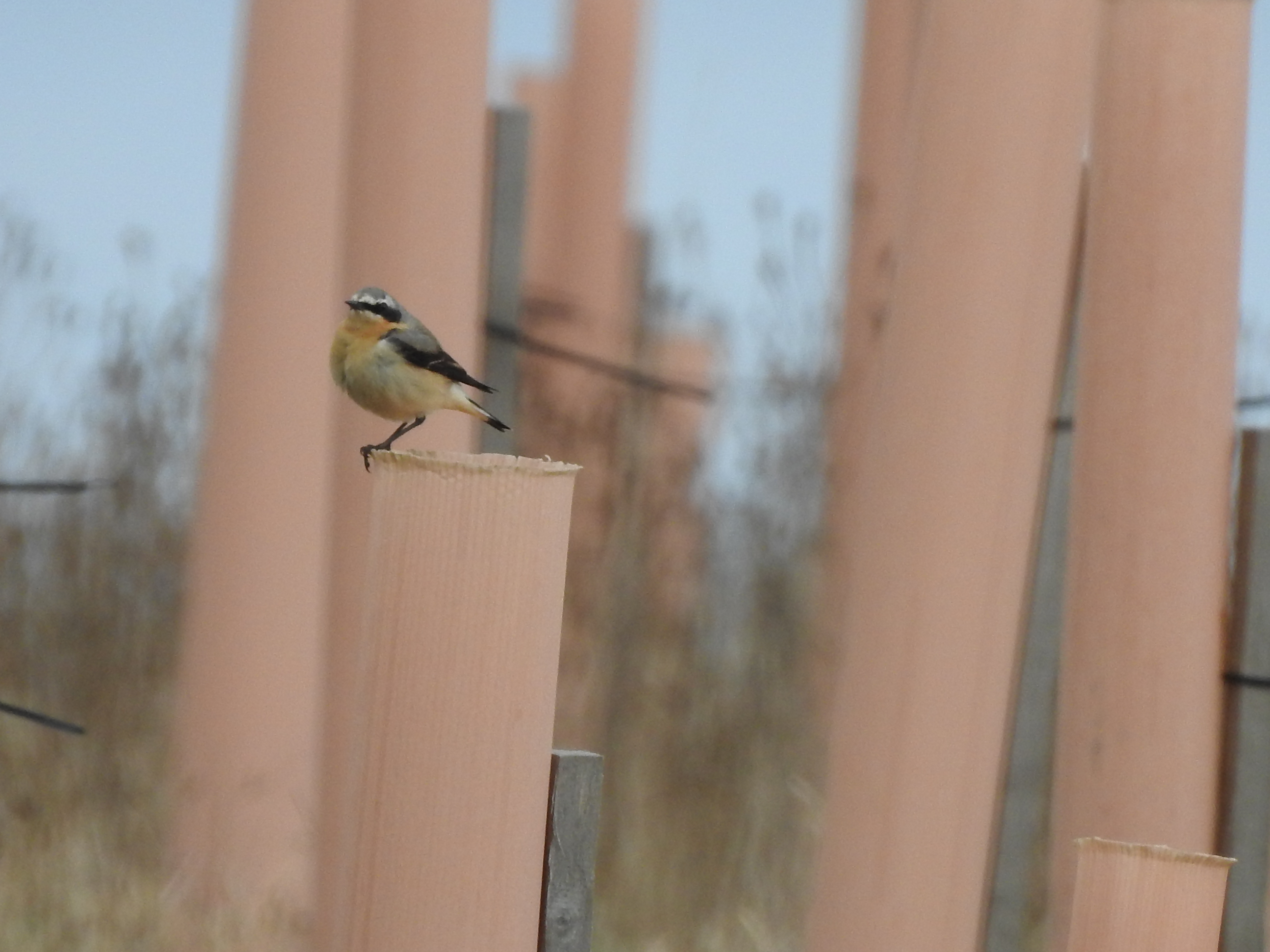
Northern Wheatear, Morton Bagot, Warwickshire (Richard Harbird).
Late on Sunday, intriguing news broke of a Golden Pheasant at the once-regular site of Wolferton Triangle near Sandringham, Norfolk. The site once hosted an annual pilgrimage from birders, who would partake in the site’s exotic pheasants as part of a wider Norfolk ‘totting up’ of year ticks. However, there have been no reports of the species at the site since 2019, meaning this latest example is perhaps best described as being as ‘of unknown origin’. A recent escape or deliberate release would seem most likely – but is an elusive remnant individual completely beyond the realms of possibility?
Much like its close cogener, Lady Amherst’s Pheasant, Golden Pheasant is teetering on the precipice of extirpation as a resident species in Britain. Mirroring their national decline, numbers at Wolferton steadily dwindled throughout the 2010s, down to just one male by early 2017 and with reports drying up entirely just two years later. A small population persists elsewhere in Breckland, though a 2023 study showed that this population is down to as few as four individuals, concluding that Britain’s population of Golden Pheasant is now functionally extinct. A tiny population also persists in Poole Harbour, Dorset – the only place outside the Brecks where ‘wild’ Golden Pheasants can be seen in Britain.
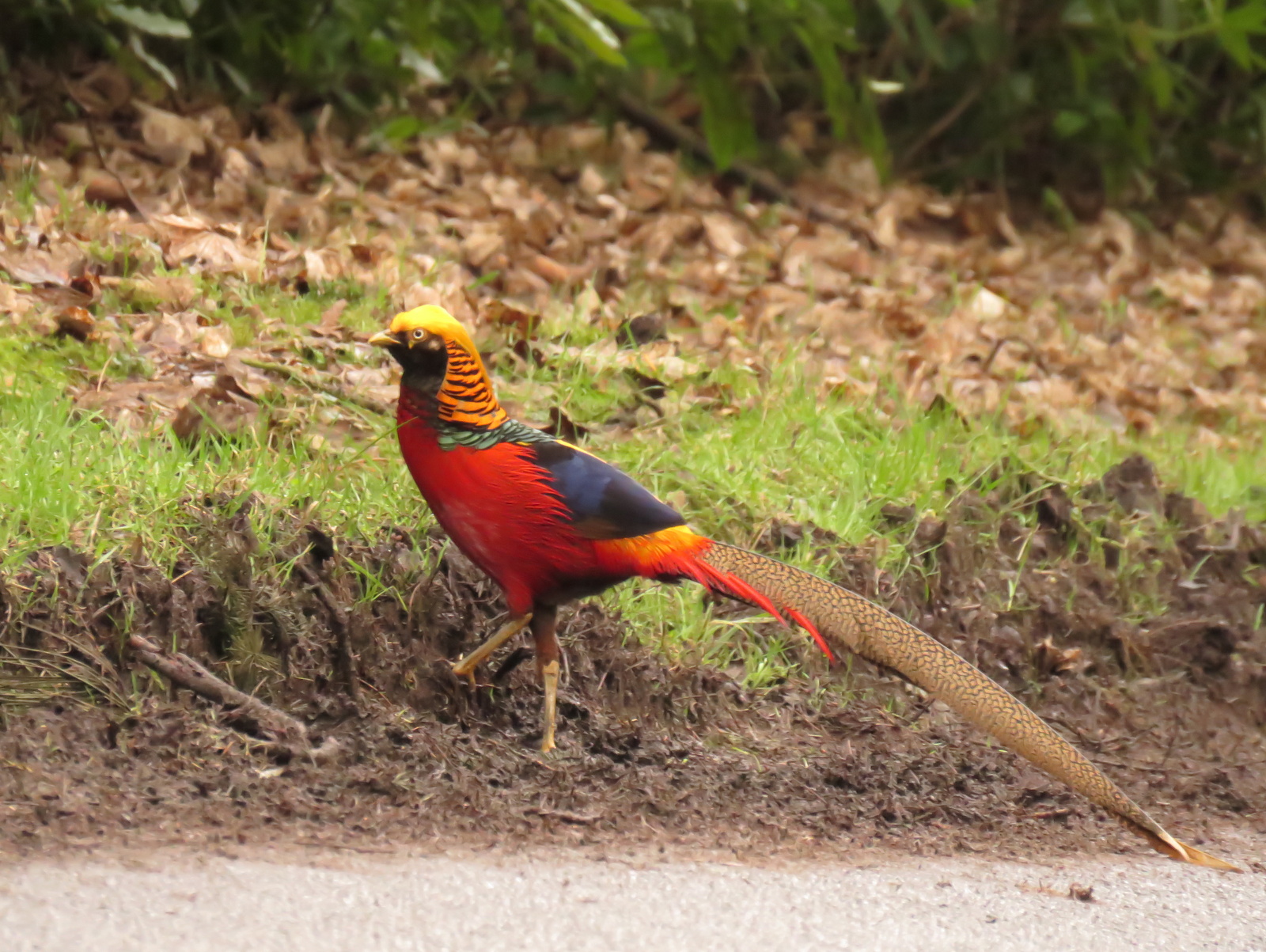
Golden Pheasant, Wolferton, Norfolk, 5 February 2016 (Patrick Frew).
Present for its fourth week, the Ayrshire Myrtle Warbler continued to prove a popular draw to the Scottish Lowlands. Recent days have seen it begin its prealternate moult, with signs of breeding plumage starting to appear. This is sometimes completed during the species’ spring migration – but plenty of birders will be hoping it hangs around for another couple of weeks to show off its new apparel before departure.
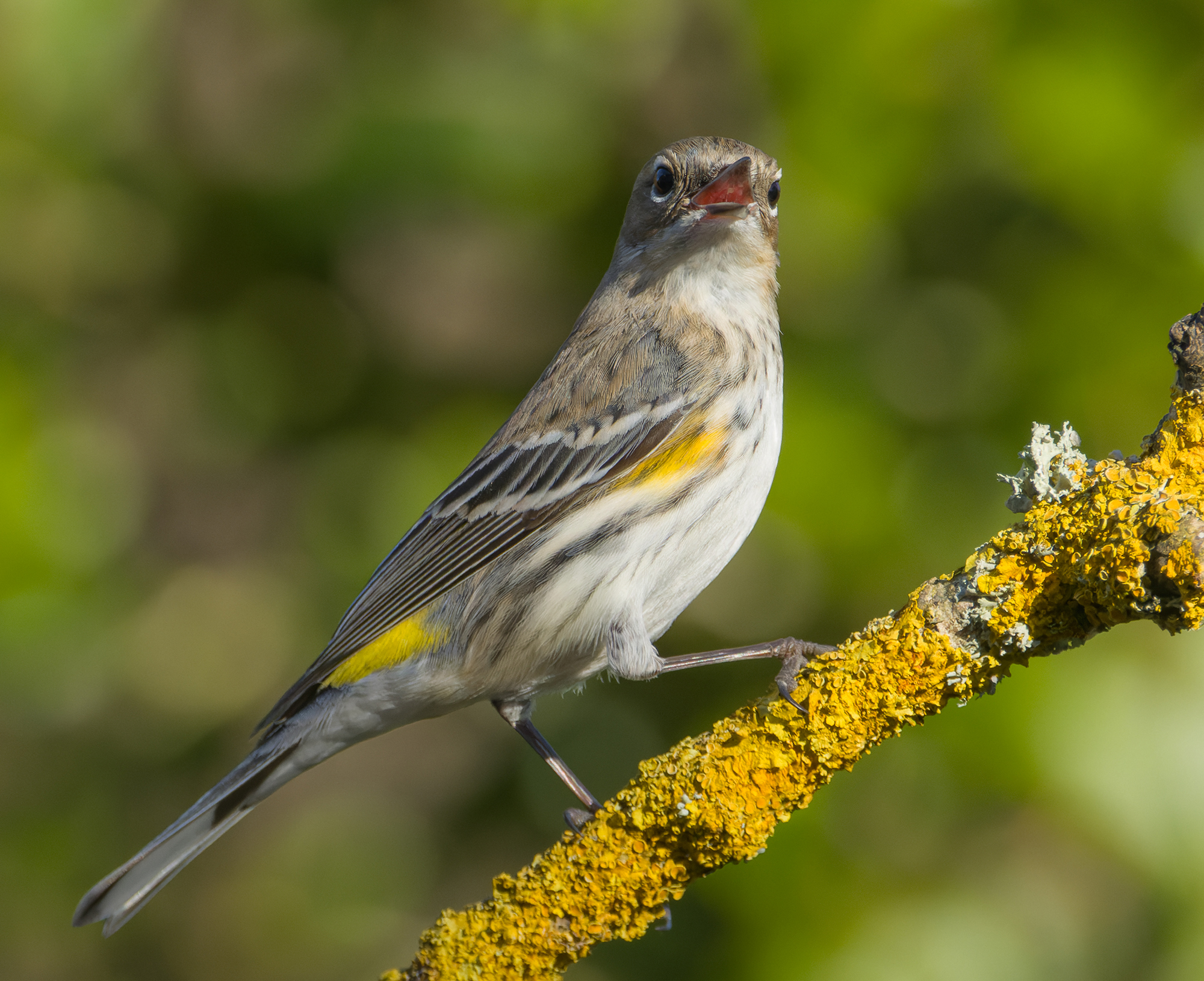
Myrtle Warbler, Kilwinning, Ayrshire (Stevie Clarke).
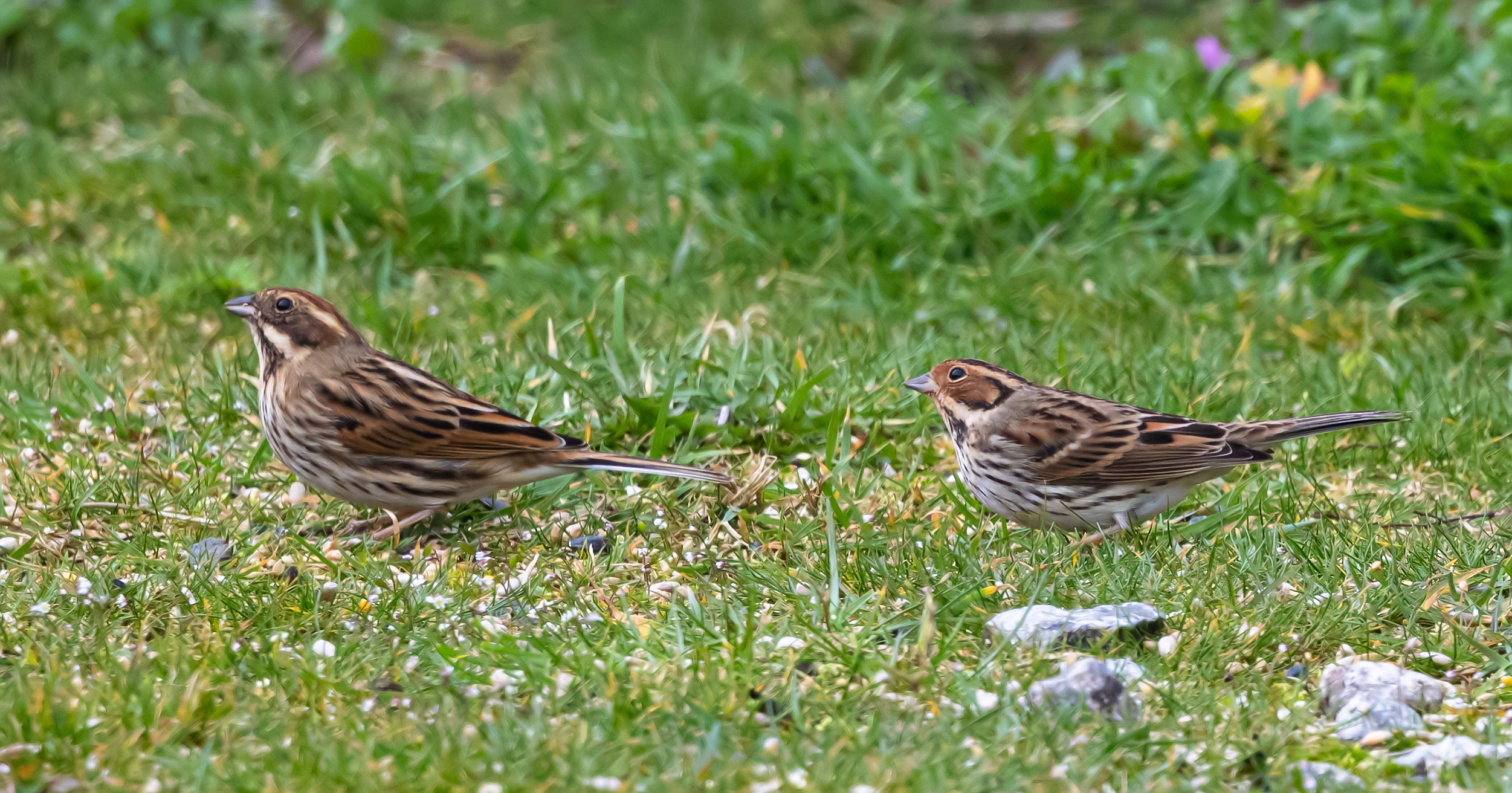
Little Bunting (right) and Reed Bunting, Broadsands, Devon (Chris Lake).
An enviable double-act concerned both a male Rustic Bunting and a male Coues’s Arctic Redpoll sharing setaside fields near Helhoughton, Norfolk, while a popular Devonian find saw a Little Bunting coming to seed in the car park at Broadsands from 11th. Passerine action was otherwise defined by a number of lingering winter visitors, including the Cumbrian Richard’s Pipit, three Great Grey Shrikes and two Yellow-browed Warblers, plus 16 Shore Larks split across three sites.
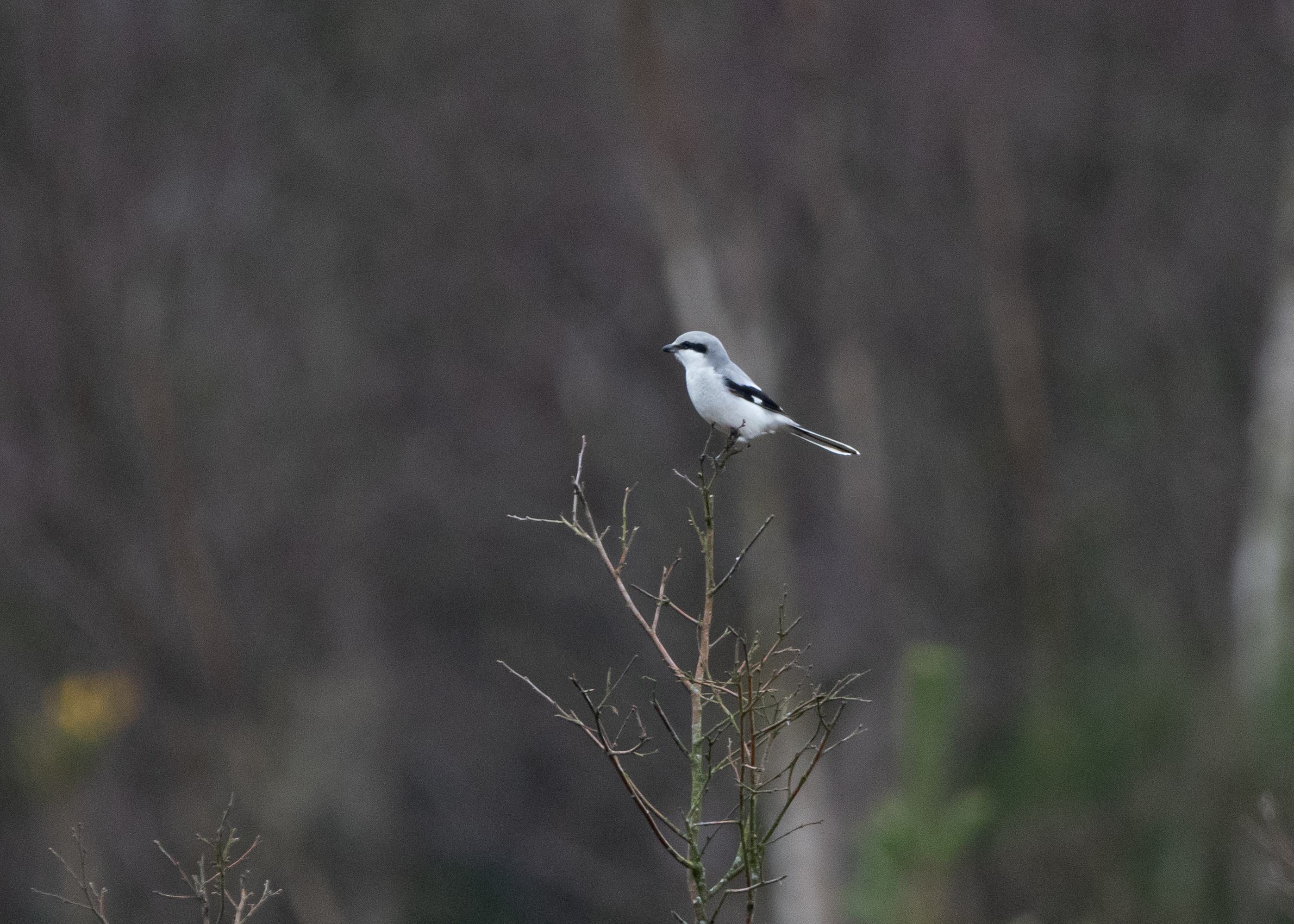
Great Grey Shrike, Black Down NT, West Sussex (Stephen Webb).
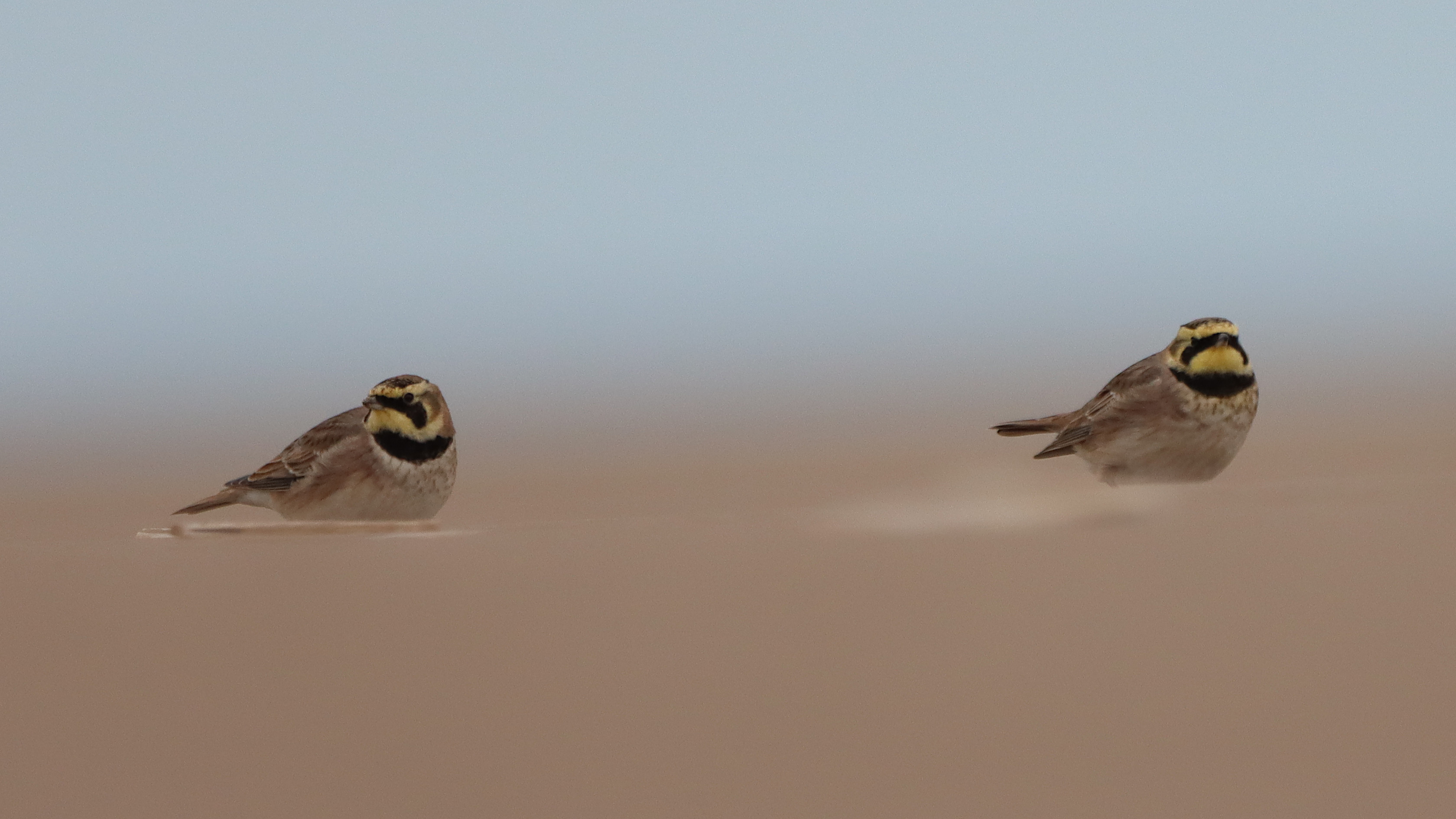
Shore Lark, Holkham Gap, Norfolk (Mark Rutter).
Reports of unringed White Storks of unknown origin hailed from Hickling Broad, Norfolk, and the Suffolk coast. Pallid Harriers, meanwhile, continued in Norfolk, East Yorkshire and Glamorgan, with unconfirmed reports of Black Kite received from London and Suffolk.
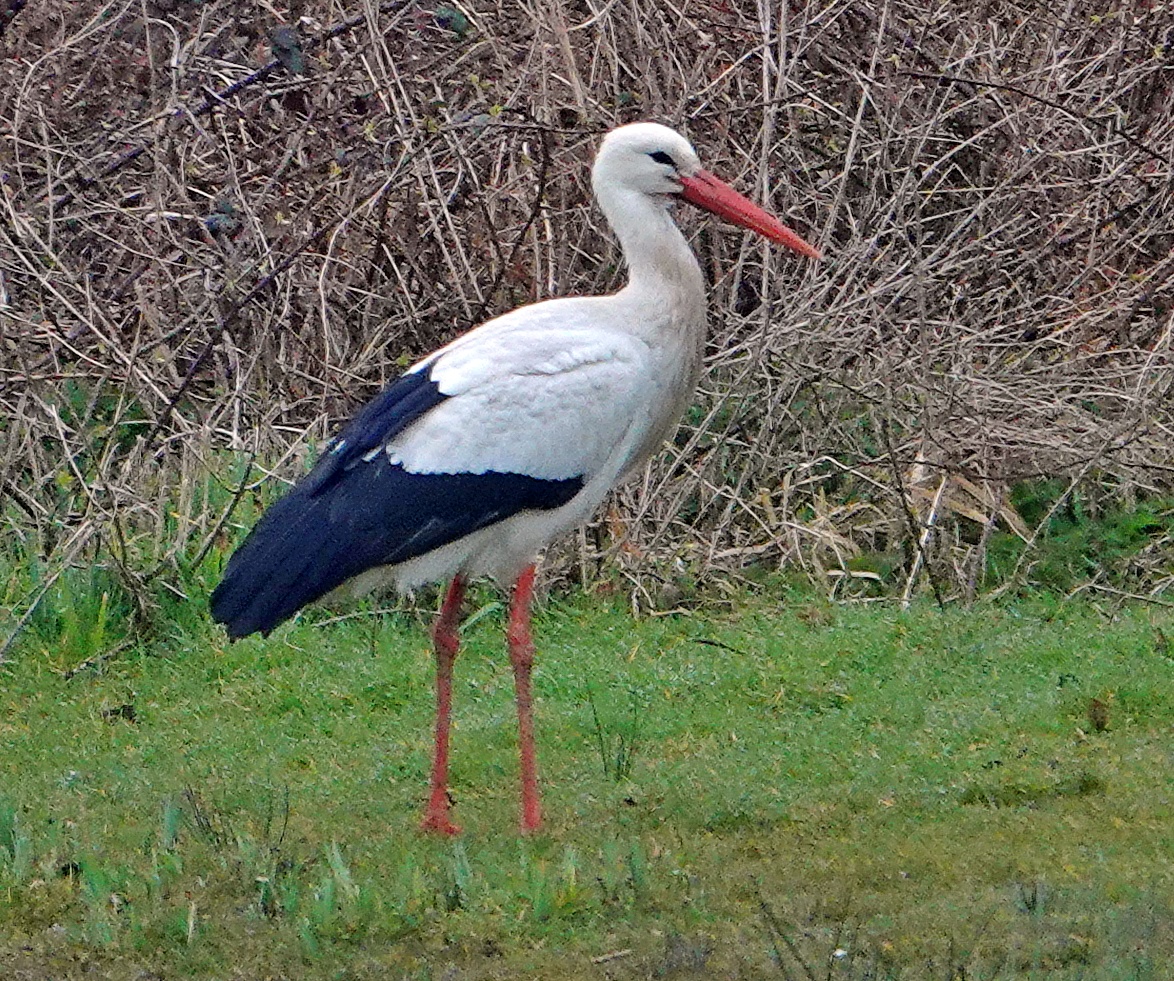
White Stork, Hen Reedbed SWT, Suffolk (David Howell).
Despite dwindling numbers of white-wingers at least seven Kumlien’s Gulls were reported, including the Thayer’s/Kumlien’s Gull still at Stornoway Harbour on Lewis, Outer Hebrides. Three of four Ring-billed Gulls were in Ireland, where the resident Double-crested Cormorant remained in Co Leitrim and a surprise early Long-tailed Skua was at Maam Cross, Co Galway, on 17th. A first-winter Bonaparte’s Gull was in Mount’s Bay, Cornwall, on two dates.
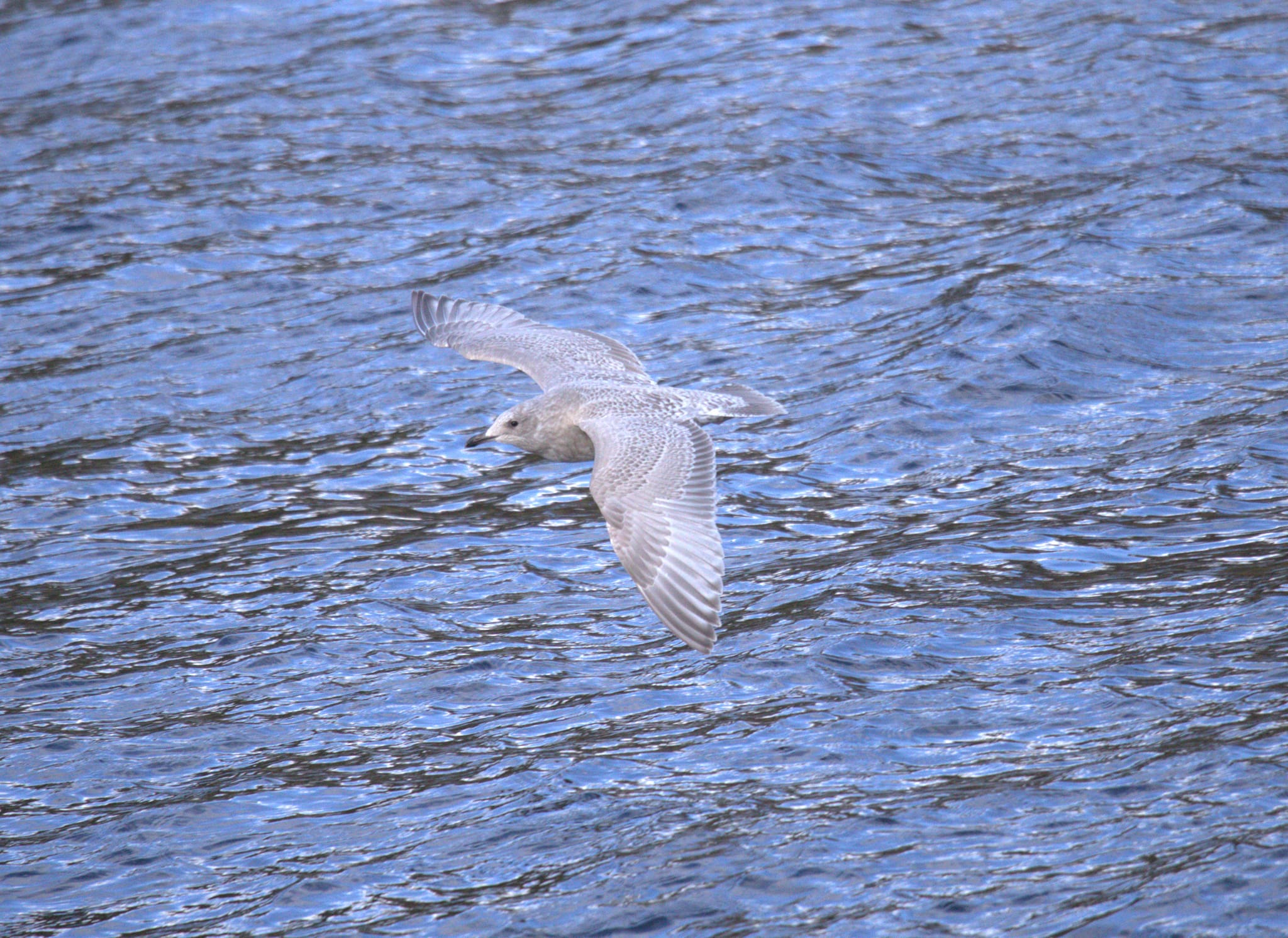
Thayer’s/Kumlien’s Gull, Stornoway Harbour, Lewis, Outer Hebrides (Steve Dodd).
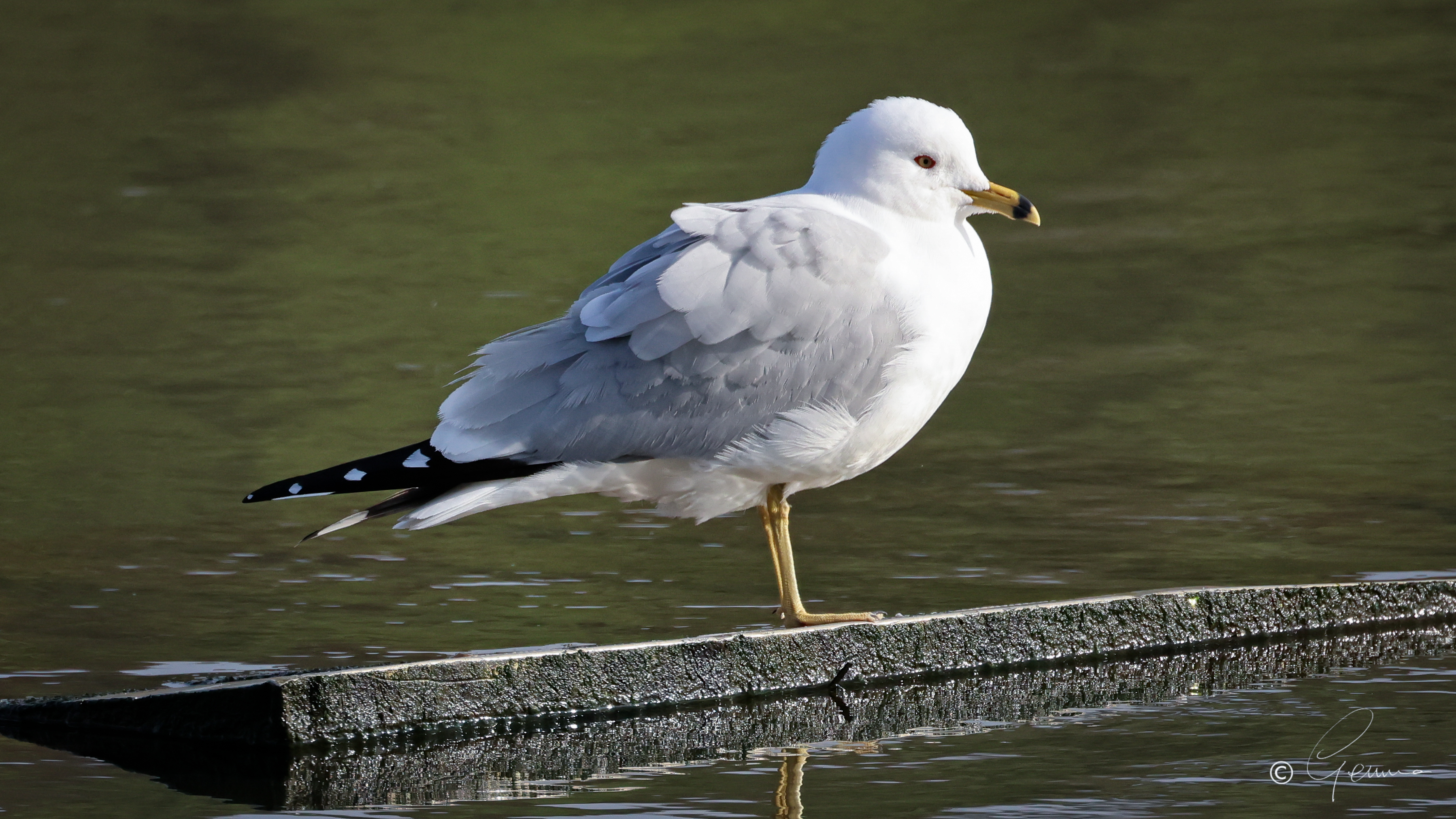
Ring-billed Gull, Cuskinny Marsh, Cork (Gemma Kelleher).
Last noted at Lough Sheelin, Co Westmeath, on 12th, the adult drake Bufflehead relocated 26 km further east across the county line to Mullagh Lough, Co Cavan, the following day – where it notched up another county-first record on its whistlestop Irish tour. ‘Mega’ news in Britain, meanwhile, concerned the lingering adult drake Baikal Teal at Greylake RPSB, Somerset. Additional totals comprised six American Wigeon, 14 Lesser Scaup, 29 Smew and the Hampshire Ferruginous Duck, while 20 Green-winged Teal included the wintering drake at Frampton Marsh RSPB, Lincolnshire, being joined by a second on 16th. Garganey numbered into double figures. Nearly a quarter of the week’s 21 Ring-necked Ducks were in Somerset, with all five wintering birds on the Somerset Levels joining up at Shapwick Heath NNR.
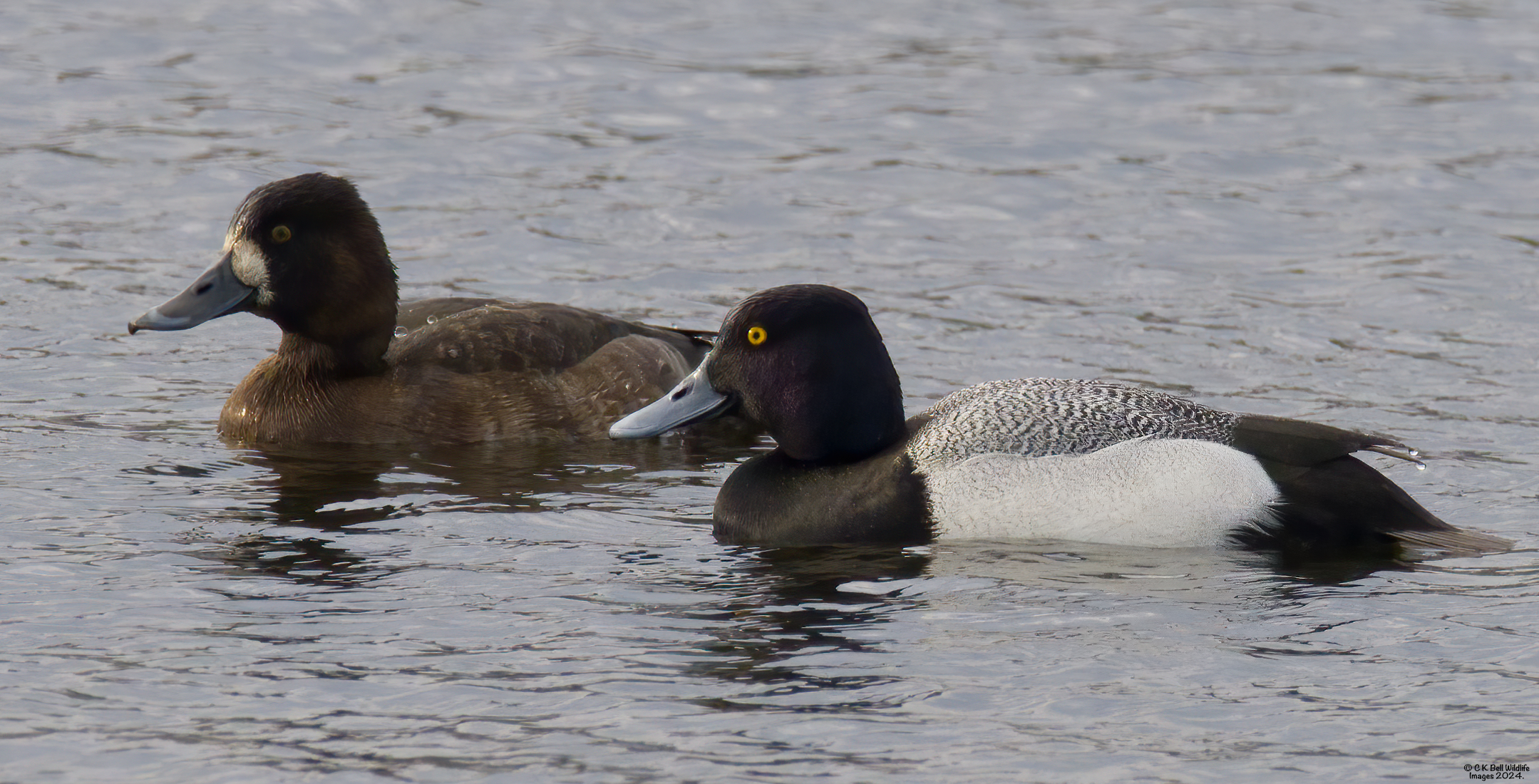
Lesser Scaup (drake and female), Leighton Moss RSPB, Lancashire (Craig Bell).
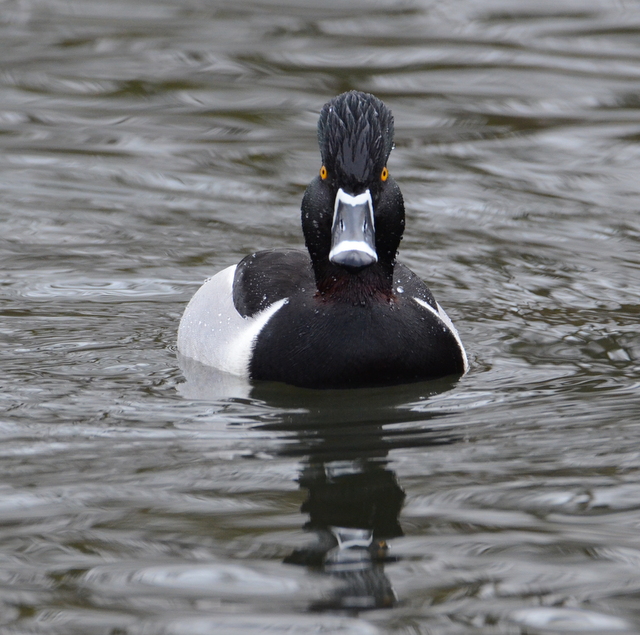
Ring-necked Duck, Milngavie, Clyde (Joe Graham).
Musselburgh, Lothian, held onto its drake King Eider for another week. An adult drake White-winged Scoter remained off the Co Kerry coast and Surf Scoter were off six sites. Two White-billed Divers were off Scottish islands and the adult Pacific Diver was again at Crookhaven, Co Cork.
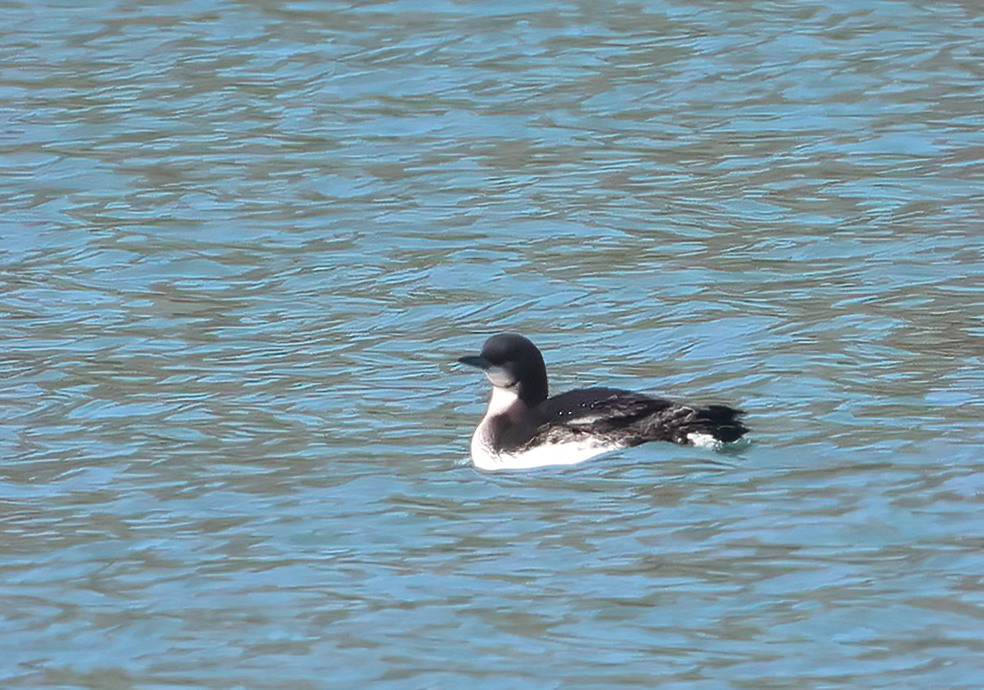
Pacific Diver, Crookhaven, Cork (Richard Mills).
The bumper winter of 2023/24 for Red-breasted Geese continued with the finding of no fewer than two this week – one at Burgh Marsh, Cumbria, with Barnacle Geese and one at Hale, Cheshire, with Pink-footed Geese – while an incredible three were with Dark-bellied Brent Geese at Great Wakering, Essex, on 11th. Additional birds clung on in Norfolk and Argyll. Black Brant were again in Essex and East Yorkshire and a Snow Goose was at Cromdale, Highland.
A Long-billed Dowitcher on North Ronaldsay, Orkney, from 14th saw the bird observatory chalk up its first rarity of 2024 – undoubtedly the first of many. Another was at Lady’s Island Lake, Co Wexford, on 15th, while it is tempting to speculate an adult at Cley Marshes, Norfolk, from 15th is last year’s bird returning. Others remained in Suffolk and East Sussex, with lingering Lesser Yellowlegs in Lincolnshire and Co Louth. A Little Stint at Blue House Farm, Essex, on 13th was perhaps an early harbinger of spring.
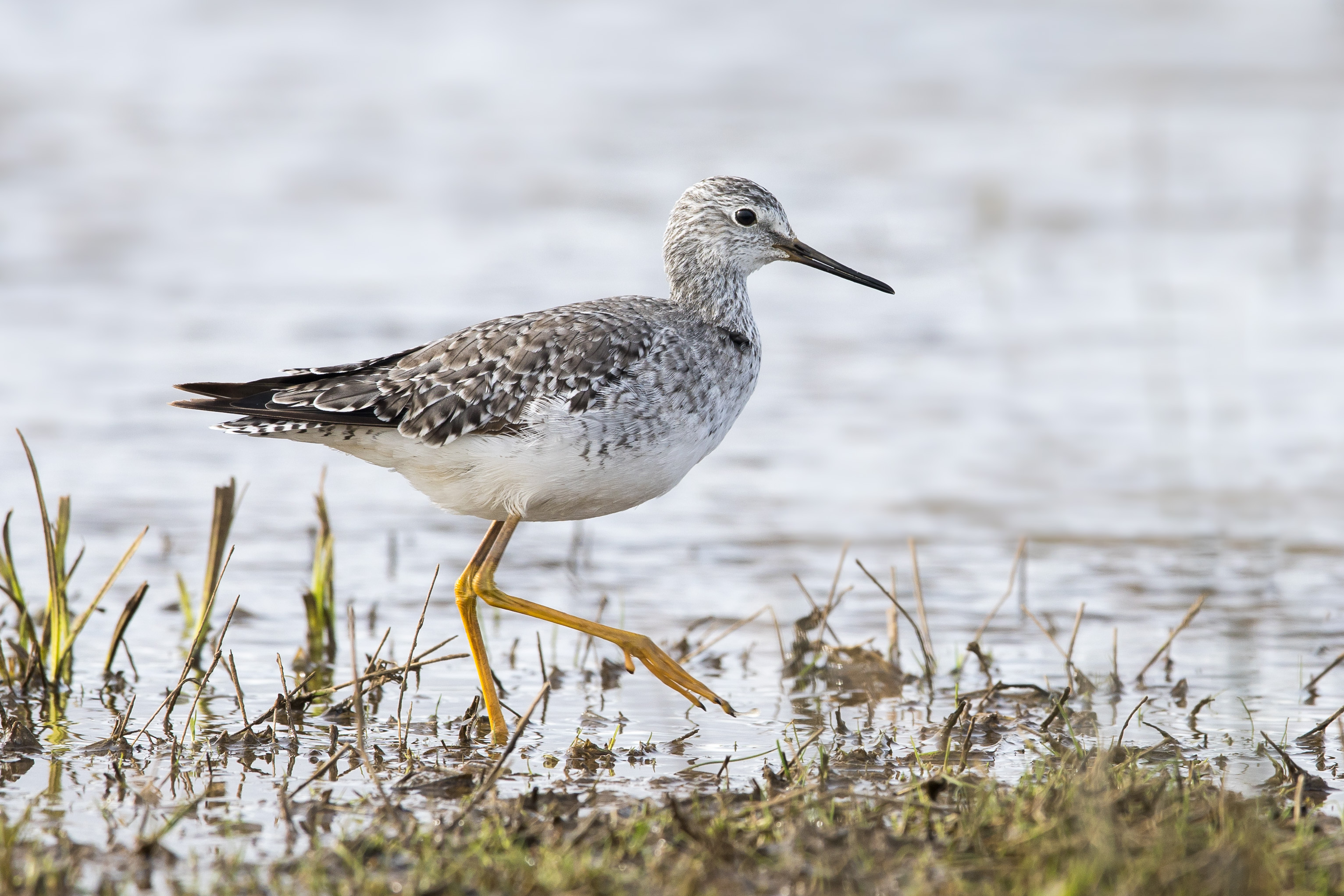
Lesser Yellowlegs, Frampton Marsh RSPB, Lincolnshire (Ian Bollen).
Western Palearctic
More notable discoveries from the extreme south-west tip of the Western Palearctic in Mauritania saw a lone Red-billed Quelea at Cap Tafarit, Arkeiss, on 11th followed by a flock of 14 the next day. It is just the second Western Palearctic record after three on São Vicente, Cape Verde, in November. Both the Grasshopper Buzzard and Abyssinian Roller remained in Nouadhibou until 14th at least.
In Corsica, France, the juvenile Lesser Moorhen hung around until 12th, providing ample opportunity for both French and regional listers to connect with this Afrotropical vagrant. A Black Scoter flew past Cap Gris-Nez near Calais on 16th, with a Forster’s Tern and Eastern Imperial Eagle remaining at their respective winter sites.
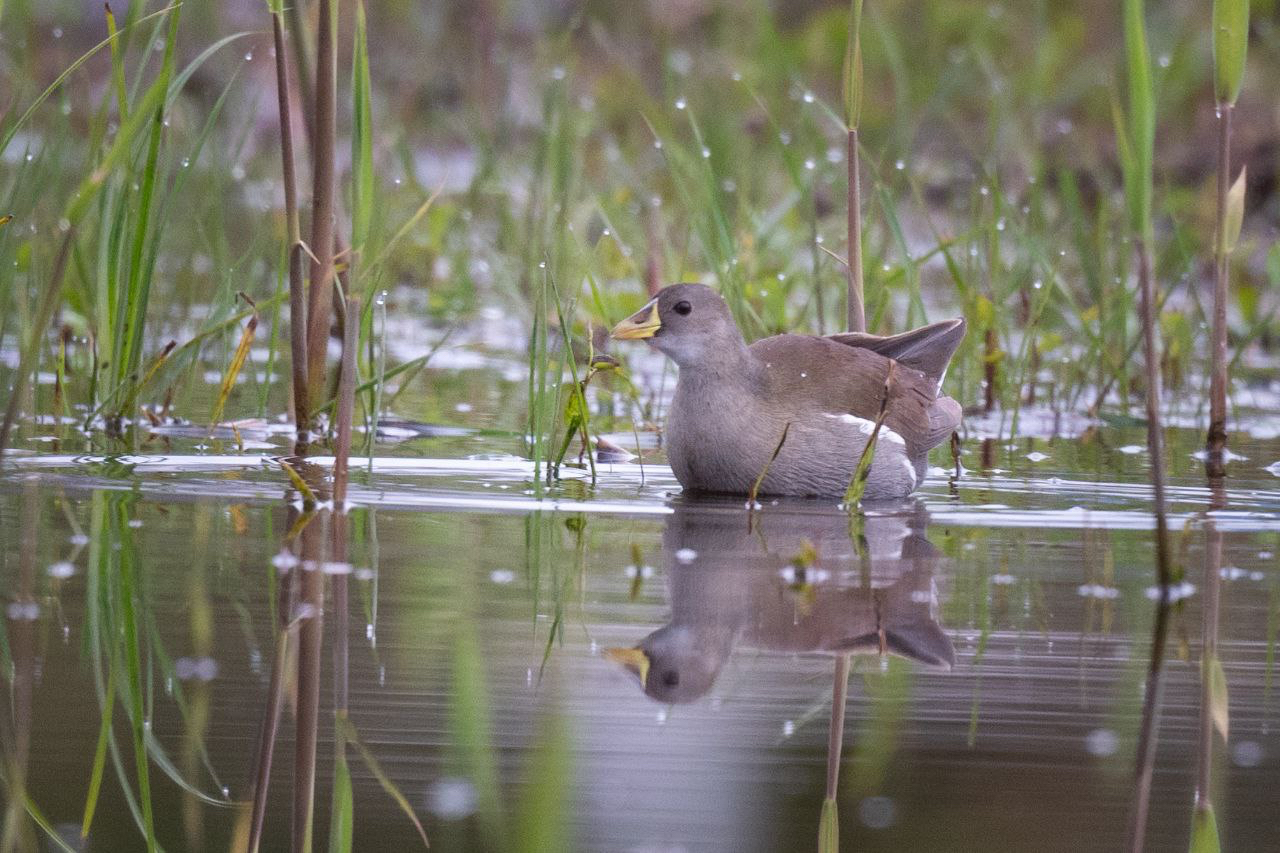
Lesser Moorhen, Ajaccio, Corse-du-Sud (Antoine Leoncini).
Baikal Teal were in both Germany and Denmark, with Germany also boasting a Black Scoter off Börgerende-Rethwisch. The two Ross’s Geese continued in Friesland, Netherlands, until 15th at least, with a Moustached Warbler continuing to hold territory near Wageningen.
In Spain, the Catalonia White-throated Sparrow was reported for the first time since late January. A Pygmy Cormorant continued nearby at Llobregat Delta and two Lesser Flamingos were in Valencia. The Gran Canaria Sudan Golden Sparrow remained in situ. News from Cape Verde comprised the archipelago’s first Upland Sandpiper on Sal, with an Intermediate Egret and Hudsonian Whimbrel again on São Vicente. Two Wood Duck were in the Azores.





